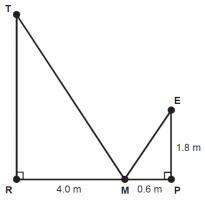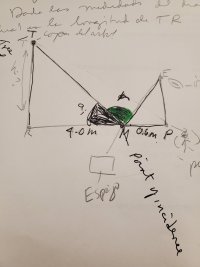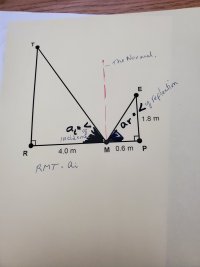eddy2017
Elite Member
- Joined
- Oct 27, 2017
- Messages
- 2,525
Hi, dear tutors and helpers:
I need help with this. I'd appreciate if you can send me links for tutorials and/or tell me what to study to start analyzing this. I have already studied intersecting lines, secant lines, etc, but nothing is helping. someone suggested the theorem of intersecting lines, but I have not found that online. maybe free academy has a video about that.
The height TR of a tree may be measured by using similar triangles. A mirror is placed at point M so that the top of the tree is sighted in the mirror by a person standing at point P. The person's eye is at point E. Given the measurements shown in the diagram what is the length of TR?
I am attaching a pic that comes with the problem
I need help with this. I'd appreciate if you can send me links for tutorials and/or tell me what to study to start analyzing this. I have already studied intersecting lines, secant lines, etc, but nothing is helping. someone suggested the theorem of intersecting lines, but I have not found that online. maybe free academy has a video about that.
The height TR of a tree may be measured by using similar triangles. A mirror is placed at point M so that the top of the tree is sighted in the mirror by a person standing at point P. The person's eye is at point E. Given the measurements shown in the diagram what is the length of TR?
I am attaching a pic that comes with the problem




